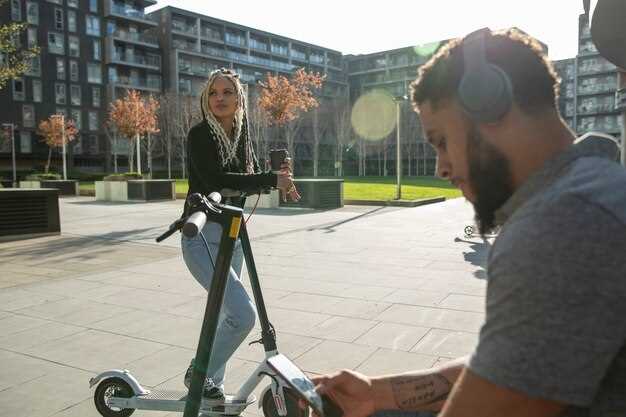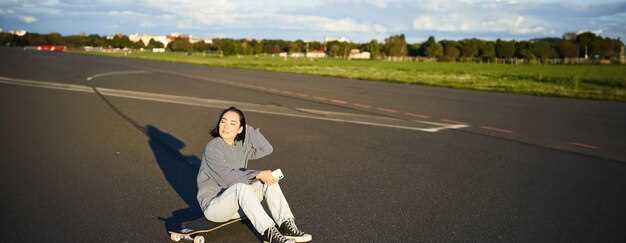
Urban riding presents a unique set of challenges and opportunities, particularly when it comes to managing speed. Navigating crowded streets and tight corners requires not just skill but also a keen awareness of one’s surroundings. Riding slowly can often be the safest option, ensuring that you can react promptly to sudden obstacles or changes in traffic.
In a busy urban environment, maintaining slow and controlled movement is crucial. Riders must develop techniques to enhance their stability and control at lower speeds. This involves understanding balance, body positioning, and the effective use of brakes. The ability to master slow riding techniques not only improves safety but also boosts the rider’s confidence when maneuvering through densely populated areas.
Developing a strong foundation in low-speed control can turn everyday riding into a more enjoyable experience. By focusing on various strategies for managing speed effectively, riders can navigate urban landscapes with ease, prioritizing safety and responsiveness over mere velocity. In this article, we will explore essential tips and techniques to enhance your low-speed riding skills, ensuring a safer journey for both you and those around you.
Mastering Balance While Navigating Crowded Streets

Riding slowly through city streets requires a refined sense of balance, especially in crowded areas where pedestrians, cyclists, and vehicles coexist. To maintain stability, focus on your body position; keep your weight centered over the bike. This alignment allows for easier adjustments when encountering obstacles or sudden stops.
Another critical aspect of balance is steady pedal pressure. When you pedal consistently, you enhance your grip on the bike, making it easier to maintain control. In slow riding situations, consider using a lower gear to help you navigate tight spaces without losing momentum.
Practicing slow-speed maneuvers will improve your overall balance. Find an open area where you can safely practice tight turns and quick stops. Aim to shift your body weight slightly in the direction you wish to turn; this will help you steer seamlessly while maintaining stability.
When approaching pedestrians or navigating through small groups, communicate your intentions clearly. Use hand signals to indicate your direction and keep your speed minimal. This not only helps you maintain balance but also ensures the safety of those around you.
Lastly, always stay alert. Watch for sudden movements from pedestrians or other cyclists, and be prepared to react. Mastering balance while riding slow in urban environments is not just about physical skills; it also involves awareness and anticipation of your surroundings.
Techniques for Smooth Acceleration and Deceleration in Traffic

Riding in a city environment requires a calm approach to speed management, particularly when it comes to acceleration and deceleration. Smooth transitions between these states contribute to safety, stability, and an overall pleasant experience for both the rider and surrounding motorists.
When accelerating, start by gradually increasing throttle input. Instead of abruptly twisting the throttle, apply gentle pressure to maintain control. This allows you to build speed slowly, providing a better sense of balance, which is essential in slow-moving traffic. Keeping an eye on the road ahead helps you anticipate when to accelerate, ensuring you remain in sync with the flow of vehicles.
Additionally, practice using your body weight to assist in acceleration. Leaning slightly forward can help distribute weight, which keeps your bike stable and responsive. This technique is particularly useful when navigating around vehicles or making turns, as it enhances control at low speeds.
For deceleration, use both engine braking and the brake controls effectively. Begin by easing off the throttle and then apply the brakes smoothly. Abrupt braking can lead to loss of control, especially in congested city streets where quick stops are often necessary. Extending your stopping distance by starting to slow down early will reduce the risk of skidding or jolting, allowing for a more stable ride.
Moreover, it is crucial to maintain a safe following distance from other vehicles. This practice gives you adequate time to react and adjust your speed without needing sudden stops. Additionally, utilizing the brakes gently rather than harshly increases comfort and keeps both you and other road users safer.
Incorporating these techniques into your urban riding can help ensure a smooth experience. Remember, in a city environment, managing speed with care is key to ensuring your safety and the safety of others on the road.
Using Visual and Auditory Cues to Enhance Awareness
In urban riding, maintaining a high level of awareness is essential for ensuring safety, especially at low speeds. Visual and auditory cues play a pivotal role in enhancing a rider’s situational awareness. Leveraging these cues effectively can significantly reduce the risk of accidents while navigating through the bustling city streets.
Visual cues encompass a variety of environmental signals that alert riders to potential hazards. For instance, observing traffic signs, signals, and road markings allows cyclists to stay informed about speed limits, lane changes, and pedestrian crossings. Additionally, being attentive to the movements of other road users–such as cars, pedestrians, and fellow cyclists–can aid in predicting their actions. Utilizing bright or reflective clothing can also increase visibility, making riders more noticeable to drivers and pedestrians alike.
On the other hand, auditory cues serve as crucial indicators of changes in the environment. Sounds such as approaching vehicles, honking horns, or even the chatter of pedestrians can provide invaluable information. Wearing helmets equipped with audio systems can help riders remain aware of their surroundings without compromising their ability to hear vital sounds from their environment. Furthermore, actively listening to the sound of one’s own bike, including tire noise and mechanical issues, can indicate when adjustments are necessary.
Combining visual and auditory cues creates a more comprehensive awareness framework. For example, while navigating through busy intersections, a rider who is visually scanning their surroundings while simultaneously listening for honking or other vehicle noises is more likely to react promptly to potential risks. By honing these skills, riders can develop a more intuitive understanding of their environment, making low-speed riding through the city safer and more enjoyable.
